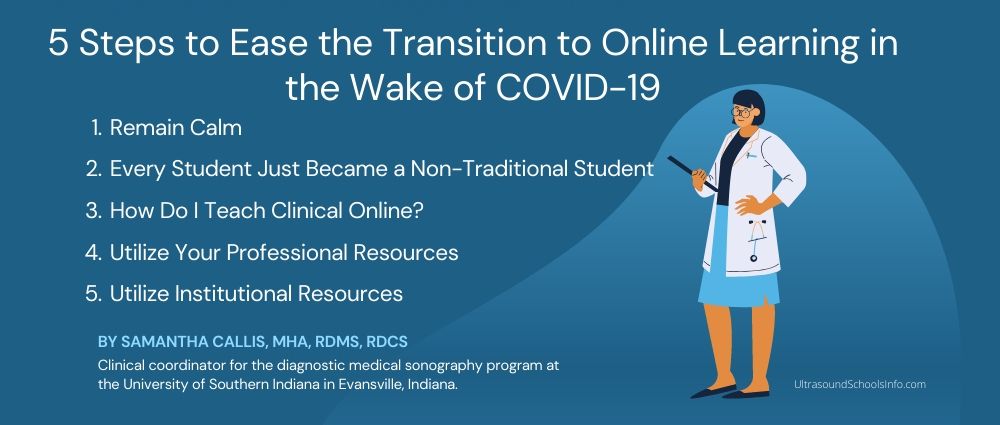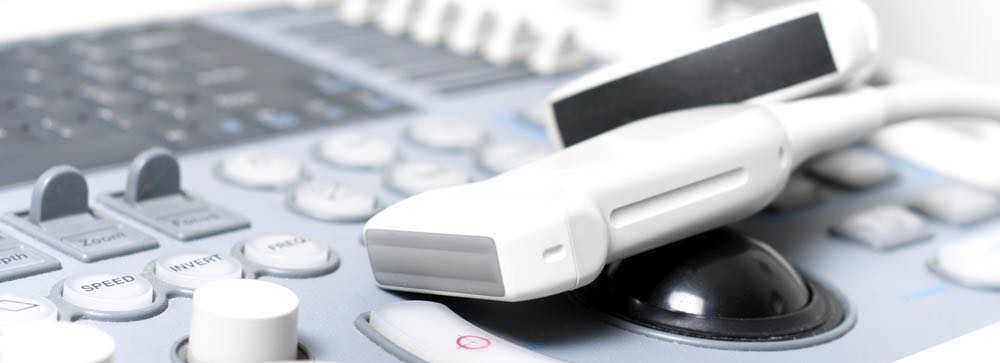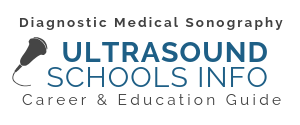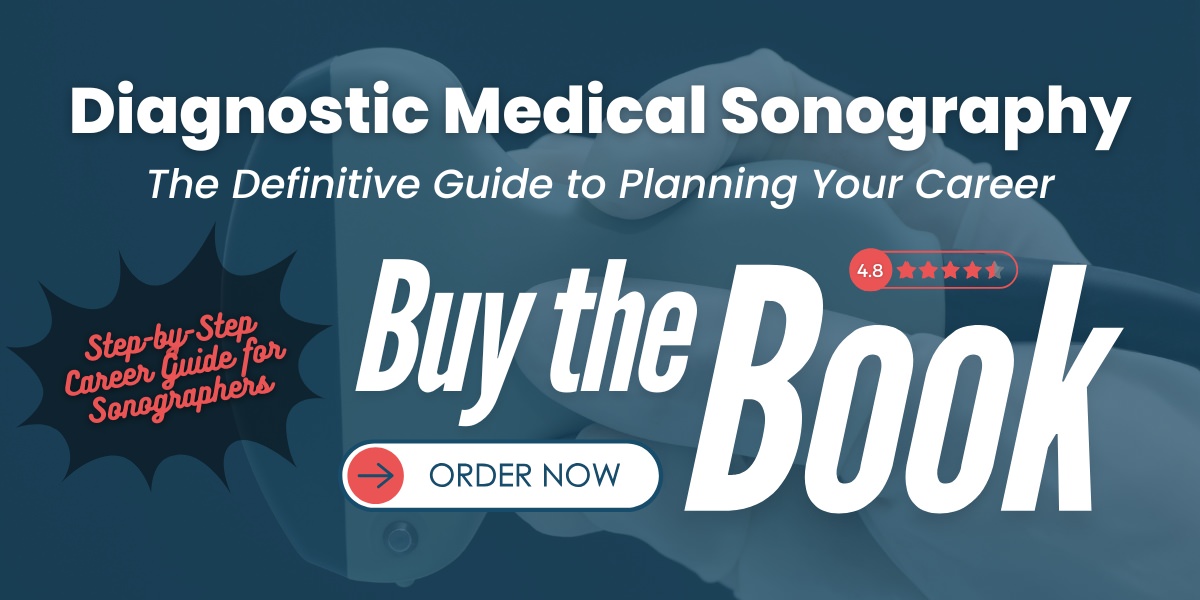Sonography Education: Expecting the Unexpected… and then Some
When I think of the unexpected, I think things like losing clinical sites, student attrition, incidental lab findings on volunteers, etc. The thought of a series of events like something out of an apocalyptic doomsday movie really never made the short list in my mind. I never dreamed of a world where I had to figure out how to teach clinical or laboratory activities virtually.
Ladies and gentlemen, we have arrived.
Wave your magic wand and teach students to do sonography… online… without a lab… without patients… without volunteers… without tangible resources.
After two weeks of staring off into space and pacing in circles around my house, I finally started gathering my wits to figure out how I could make this work.
If nobody has told you yet:
WE CAN DO THIS. THIS IS POSSIBLE. OUR STUDENTS WILL BE FINE. OUR STUDENTS WILL CONTINUE LEARNING.
(Go ahead and repeat that as long as often as you need to.)

5 Steps to Ease the Transition to Online Learning in the Wake of COVID-19
1. Remain Calm. It has become pretty clear that this is beyond our control. With that being said, be prepared to be flexible and offer grace to your students. In return, the students will reward you with the same. We are going to need it. The goodness we offer to them comes right back to us… Is it too soon for me to make a sound beam joke?
We are all scared, but the students are more than likely in a more precarious headspace than us educators. This is our chance to shine as leaders. We have to be able to look at our students and say, “We can’t plan for much of this, but we can certainly improvise for a great deal of it.” We are healthcare professionals; this is what we do. We don’t cry and walk in circles… (okay maybe that first week or so, but you know what I mean). Time to put our heads down and get to work!
2. Every Student Just Became a Non-Traditional Student. Like this isn’t going to operate like normal. The picturesque freshman studying in a hammock on a breezy summer day on campus after eating lunch with their roommates is not our reality. Remember these students are employees, brothers, sisters, patients, volunteers, caretakers, parents, etc.
Most importantly, just like you, they are doing their best to get by. If you are using a learning management system (LMS) such as Blackboard or Canvas, that is great! Keep using it. Optimize it for the students more now than ever. If you are using an LMS for the first time, have no fear. Many are very user friendly, and we are a group of educators that are more than happy to knowledge share. Students don’t need FANCY, they need FUNCTION.
Some tips for designing coursework in this current state of affairs:
- Rethink “Class Time”. Routine is drastically different, even nonexistent right now. Some have very structured routines and some each day looks totally different. BE FLEXIBLE. Maybe you have virtual face-to-face meetings on Monday/Wednesday from 10:00 – whatever, but also record them in case somebody has to be at work during the session? I am a huge fan of Zoom as I can have face-to-face interaction, but also utilize screensharing, whiteboard functions, recording features, etc.
- Keep it Functional, Not Fancy. Students don’t need fancy online course content. They need content that is organized, easy-to-read, and comprehendible. If you find yourself stressing over creating new content that you would typically lecture over with a whiteboard, consider making it “fancy” as your last priority, particularly if you are in a time crunch. The formula for calculating cardiac output is the same whether all of your PowerPoint slides are the same template, color, and font scheme. Be brave to think outside the slide. Outlines, flashcard activities, other interactive Q & A things are going to be important for keeping students engaged and not bogged down in 3 hours of kitchen
sitting. - Consider Their Resources. Your students just left their campus in a hurry. Maybe they’ve moved somewhere without acceptable internet for streaming a 3 hour lecture each week. Maybe they are working off their phone because their only computer or tablet ipso facto became their siblings for their schooling or even their parents for their remote work. Basically, don’t assume that your students have a dedicated workspace, time, or device like they usually would under normal and less pandemic circumstances.
- Communication is Key. I have had Zoom meetings once a week to do a “check in”. This has been well received. Everybody’s inbox is flooded with email right now so it’s nice to have a meet up weekly… even if it’s to say, “Hi! No update on what is happening with Fall 2020 semester, but let’s answer any questions you may have about the end of spring or summer courses.”
- Don’t Forget to Be a Human. Gone is the opportunity for us to be the “sage on the stage”. Business casual clothes and diploma-filled intimidating offices were not part of the pandemic educator orientation packet. If you weren’t the casual, cool professor last year, time to give it a try. Personally—I’m a big fan. I was also adjunct faculty before I was full-time so my casual vibe kind of stuck. It is possible to maintain a professional rapport and give your students much-needed feeling of human connection. Asking how things are going, chatting about TV show recommendations, etc. takes a lot of the pressure off both parties to be a “perfect student” or “perfect professor”. I was never a big fan of the hierarchal style relationship anyways, but that’s just me. Sure—I’m not going to be answering “emergency homework questions” 30 minutes before an assignment is due, but who knows… maybe I do?! It is the Wild Wild West out here now, after all. Either way, I can guarantee you I’m not wearing a skirt and heels to do any of it these days.

3. How Do I Teach Clinical Online? Normally, I would say you don’t. However, these are not normal times. For those of you who have students that were in clinical one week and gone the next, I feel your pain. I’m a clinical coordinator and also had to deal with the devastation of knowing my students could not continue their clinical hours. If your program is a CAAHEP accredited program, remember—we are held to the standard of making students *competent* in the performance of exams, rather than hitting a certain number of clinical hours. You know your student can scan a RUQ, for example, but maybe they needed some more exposure to pathology? Case studies. Case correlation. Case analysis. We must bring the “patient” to them so to speak. If you are a practicing sonographer as well as an educator, start thumbing through your mental rolodex. Think about cases you have had. Cases that perhaps clinical affiliates can share with you. Remember—keep it HIPAA compliant! Same rules of privacy still apply, even in a crisis. We are so much more than picture takers.
Things to consider when creating case studies:
Chart Review
- History of present illness (HPI)
- Lab correlation
- Imaging correlation
- Interprofessional interaction—reviewing notes from social work, nursing, etc.
Image Analysis
- What structures are being imaged?
- Is this congruent with the exam ordered?
- Technical considerations—is the gain, depth, focus, sector size appropriate, etc.?
Patient Care
- Calling a rapid response, code blue, initiating security response, fire emergency, etc. standards, blood pressure assessment, EKG analysis, etc.
- Care skills—bedpan/urinal usage, basic line care within practice
Infection Control Competencies
- Patient with MRSA, VRE, COVID-19, etc.
4. Utilize Your Professional Resources. Did you let that SDMS membership slide last year? Probably not, but if you did now is a great time to get it back! They acted fast for us educators, making tons of content available for use at https://www.sdms.org/sdms-response-to-sonographer-educator-needs.
Professional Organization/Societies
- JRC-DMS (If you’re a CAAHEP program, I know you didn’t forget about our quality assurance boss!) The standards haven’t changed, we simply must adjust the way we meet the standards.
- ARDMS, POCUS Certification Academy, Inteleos
- SDMS
- AIUM
- ASE
- SVU
- AEIRS
So many other wonderful professional societies—local, regional, national, international. Maybe this is a great opportunity to make some friends in other societies or even other geographic locations? I love chatting with sonographers, physicians, and researchers from other countries. I have found that normal people hours in Australia lines up GREAT with my COVID induced insomnia. Sick mate!
Join the Discussion. Speaking of chatting it up… social media can be used for good in this very odd world. Facebook, Twitter, LinkedIn, and Instagram can connect us educator-to-educator and (when professionally appropriate and feasible) with our students as well. My students know how much I love my Twitter for staying up to date on rapid changes in sonography. Follow me: @Sono_Sam #iloveusinghashtags
Other Partners/Resources
Many companies that partner with programs are going above and beyond the call of their normal duties to make certain resources and services available. Don’t forget about these important people:
- Clinical Management Systems. (Trajecsys is offering clock in/out services for programs not currently utilizing their program to help faculty and students stay organized.)
- Industry Vendors. Those awesome people who schmooze us at conferences?! Ah yes! They are incredible as always. GE, Philips, Samsung, Canon, Aquasonic, Pharmaceutical and Medical Device Representatives etc. Have a question? Think they can provide you with some educational information for you to help build and improve your course content quality? Ask. The worst anybody can say is “no”, after all.
- Third Party Educational Resources. This is not an exhaustive list, so I hope I do not hurt any feelings, but these are some of my “go-to” sites for educational materials outside of professional societies:
- CardioServ (blogs, CME services, etc.)
- UltrasoundSchoolsInfo.com
- Sonoworld.com
Don’t Reinvent the Wheel. Oh, you found an amazing YouTube video on EKG placement. Don’t stress trying to remake it. Utilize it as is! It saves you time (the most important currency for some right now), gives your students content variety, and it’s a chance for you to share some professional love and camaraderie. We are a network of professionals trying to accomplish the same goal under the most extenuating and challenging of circumstances. Don’t forget to give credit where it is due. I love bragging on my buddies during lecture who’s content I utilize. It makes me feel like I know famous people! Sono-famous, maybe?
5. Utilize Institutional Resources. If you haven’t figured out that a reference librarian is your best academic friend, now is the time. (My superhero librarian’s name is Becca!) There are no stupid questions when it comes to pandemic teaching. We all have things we do not know how to do or how to do well. There are institutional employees who are employed to make our lives easier.
Think of this crew and beyond when you need help. Maybe it’s not the right person, but I bet they know someone who knows someone. You might be surprised how many resources are at your disposal if you invested a little time in discovering and learning them. I personally am absolutely loving Microsoft Teams. It reminds me of a professional social media. I can post announcements, assignments, and other important things to my students as well as community individuals.
I had someone sit down (back in the great olden days when we were allowed to be within 6 feet of people) and show me how to use Microsoft Teams in about 15 minutes. It’s been a gamechanger for me because it gave us the rest of our allotted 60-minute meeting time to chat about coffee, feminism, and university happenings. Win-win for both of us.
- Reference Librarians
- LMS resources (Blackboard, Canvas, VoiceThread, Panopto, Microsoft Teams, etc.)
- Online Learning Professionals
- Information Technology (mmhmmm, better be ready to put in those IT tickets… you
know at some point technology is going to challenge you!) - Other Faculty (in your discipline or otherwise!) One of my colleagues and Ed.D. classmates teaches in respiratory therapy. Our worlds parallel as we are both allied health educators teaching a very specific technical skill. Another colleague is a nurse with a ton of cardiac cath lab experience. These are all people to stay in touch with. How can we improve each other’s course delivery?! Interprofessional education (IPE) does not get to go by the wayside just because we are online for a stretch of time.
- Student Driven Resources/Programs
- Disability Resources
- Academic Skills
- Advising Centers
- Career Services
- Dean of Students
- International and Multicultural Student Centers
- Alumni Association
Probably most important—YOUR STUDENTS! I think soliciting student feedback as we make this transition is crucial. They will have a sense of buy-in as a participant for areas where you need some creative push or another set of eyes. I get a message or a conference call each week of incredible ideas. Oftentimes the most junior person in any organization has the brightest plans. They are unbiased, creative, and enthusiastic. After all, this is still their college experience. Make it a great one!Just because we all had to leave campus, doesn’t mean our campus left us. Find your people and make it work. If you’ve ever watched Project Runway, Tim Gun has a famous tagline from the show about “making it work”. Tim Gun would definitely say this is a “make-it-work moment.”
May you stay Happy Heart Positive and COVID Negative,
Sam
If you’d like to learn more about opportunities in sonography, check out some of our other inspiring articles and interviews:
- Traveling Sonographer – Interview with Dave Felix, traveling sonographer and owner of SonoTemps
- Author of Sonographers Blog – Tom Whelan, a true pioneer in the field, in this two-part interview
- The Heart of It – Stephanie Eisler, RDMS, asks “Can you find a way to be there for the patient in their time of need?”



